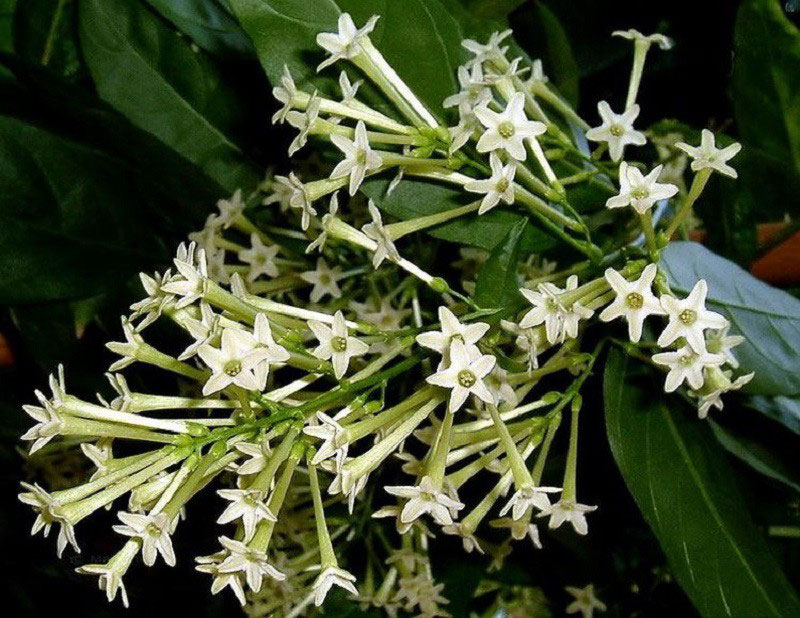
Night blooming jasmine facts and health benefits
The Night Blooming Jasmine grows best in rich, well-draining soil. You can choose light, loose sandy soil. Some gardeners even add composted cow manure to the soil, providing essential nutrients for plant growth. This plant also likes its soil at a pH level between 6.5 and 7.5. How frequent should we water them?
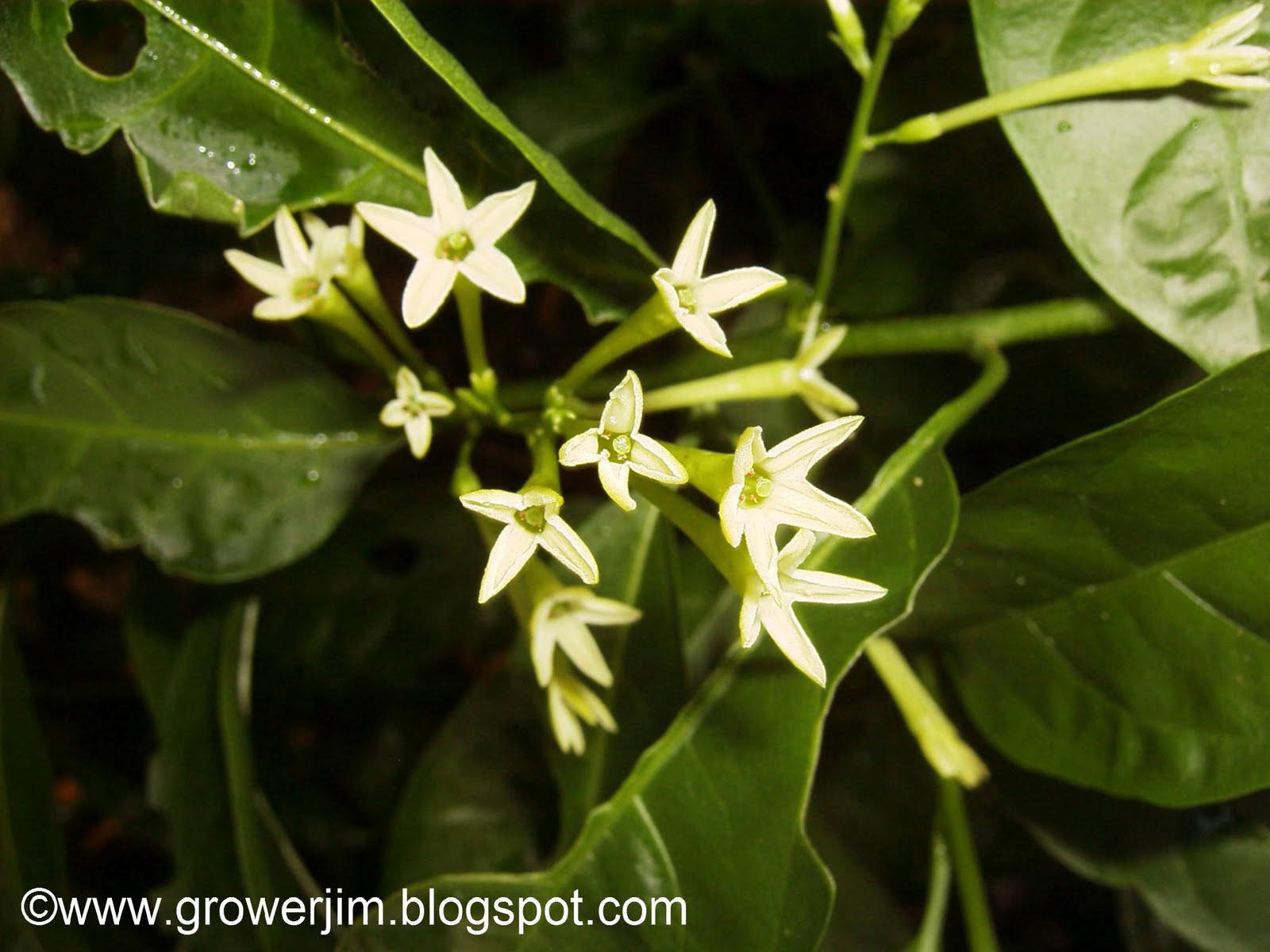
Garden Adventures Cestrum nocturnum (Nightblooming Jasmine)
Night Blooming Jasmine stands out as one of the most fragrant flowers globally. Its alluring scent, especially at night, is renowned, making it a sought-after choice for perfumes, traditional medicines, and essential oils. The plant has a nocturnal blooming habit.
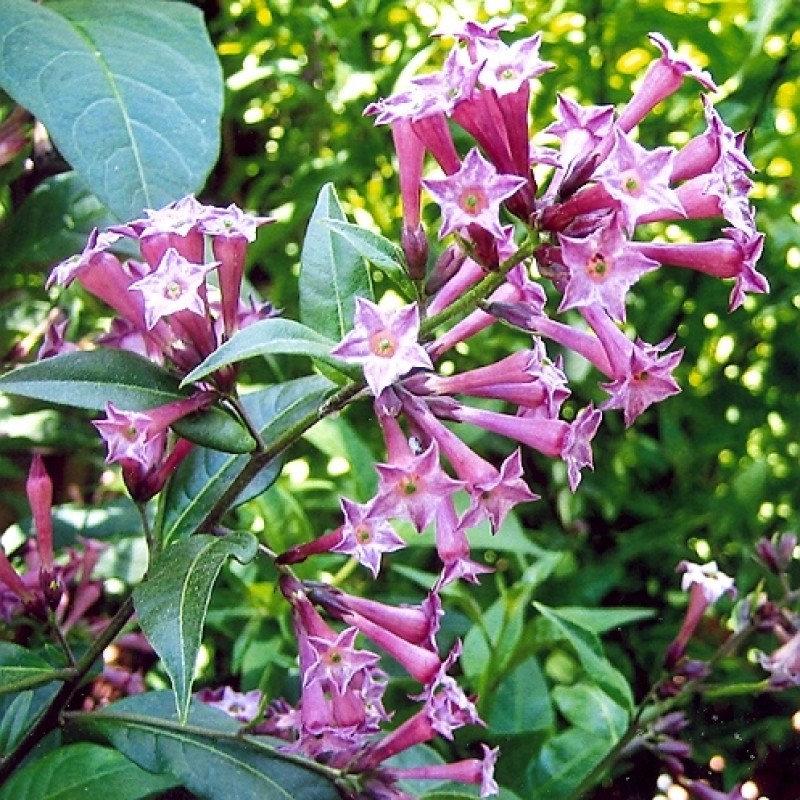
Buy Raat Rani Night Blooming Jasmine plant online at
Cestrum nocturnum A summer night releases the romantic, sultry perfume of night blooming jasmine, a favorite fragrance shrub for home landscapes in South Florida. The cascading clusters of tiny tubular flowers are cream colored - not particularly showy but they pack a wallop of scent when they open at dusk.

Cestrum Nocturnum Night Blooming Jasmine Night Jessamine Queen of
Phonetic Spelling SES-trum aw-ran-ty-IH-kum Description. Orange Cestrum is a tropical shrub or vine native to North and South America. In its native habitat it may reach 15 feet tall but in cooler climates where it freezes back to the ground, it will grow to a height and width of about 5 feet.

Night Blooming Jasmine full of blooms! Plants, Bloom, Backyard
Night-blooming jessamine is a tropical, evergreen shrub. Night-blooming jasmine grows 8-10 feet (2.5-3 m.) tall and 3 feet (91.5 cm.) wide. Its evergreen nature and tall but columnar growth habit make night-blooming jasmine an excellent candidate for privacy hedges and screens.

Night Blooming Jasmine VerdeGo
By Karen Clark Updated Nov 28, 2018 9:19 p.m. Getty Night-blooming jasmine (Cestrum nocturnum), also known as night-blooming jessamine, isn't a true jasmine. It's a tropical evergreen in the nightshade family that grows wild in the Caribbean and Central America.

Things to Know About the NightBlooming Jasmine (Cestrum nocturnum
The lady of Night Can be Grown In Ground, But it Is mostly Grown in Pots. About 12 to 15″ Pots are Best to Grow Nights Blooming Jasmine. They have Enough space to Grow this plant and Choosing Clay Pot is Again a Best thing. The Growth of Night Blooming Jasmine Is Very Much Healthier in Clay Pots Instead of Cemented and Plastic Pots.

Cestrum nocturnum Night Blooming Jasmine Hello Hello Plants
Part 1 Seeding Night Blooming Jasmine 1 Soak the seeds. Soak the seeds for twelve hours in a small bowl of water. Put some moistened sand, sphagnum moss or peat moss in a container with a removable lid, such as a yogurt container. [2] You can purchase night blooming jasmine from online seed retailers.
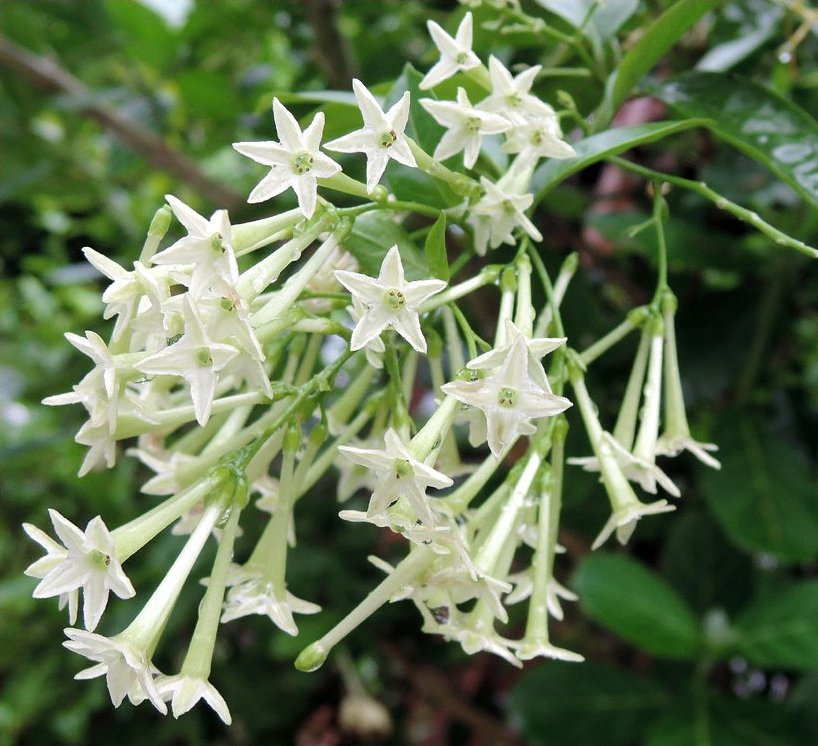
Fragrant NightBlooming Jasmine Cestrum nocturnum 15 Seeds
Night-Blooming Jasmine, also known as Cestrum nocturnum, produces clusters of white or greenish-yellow flowers that open at night and release a sweet, intoxicating aroma. Night-blooming jasmine is easy to grow and care for, as long as you provide it with the right conditions.
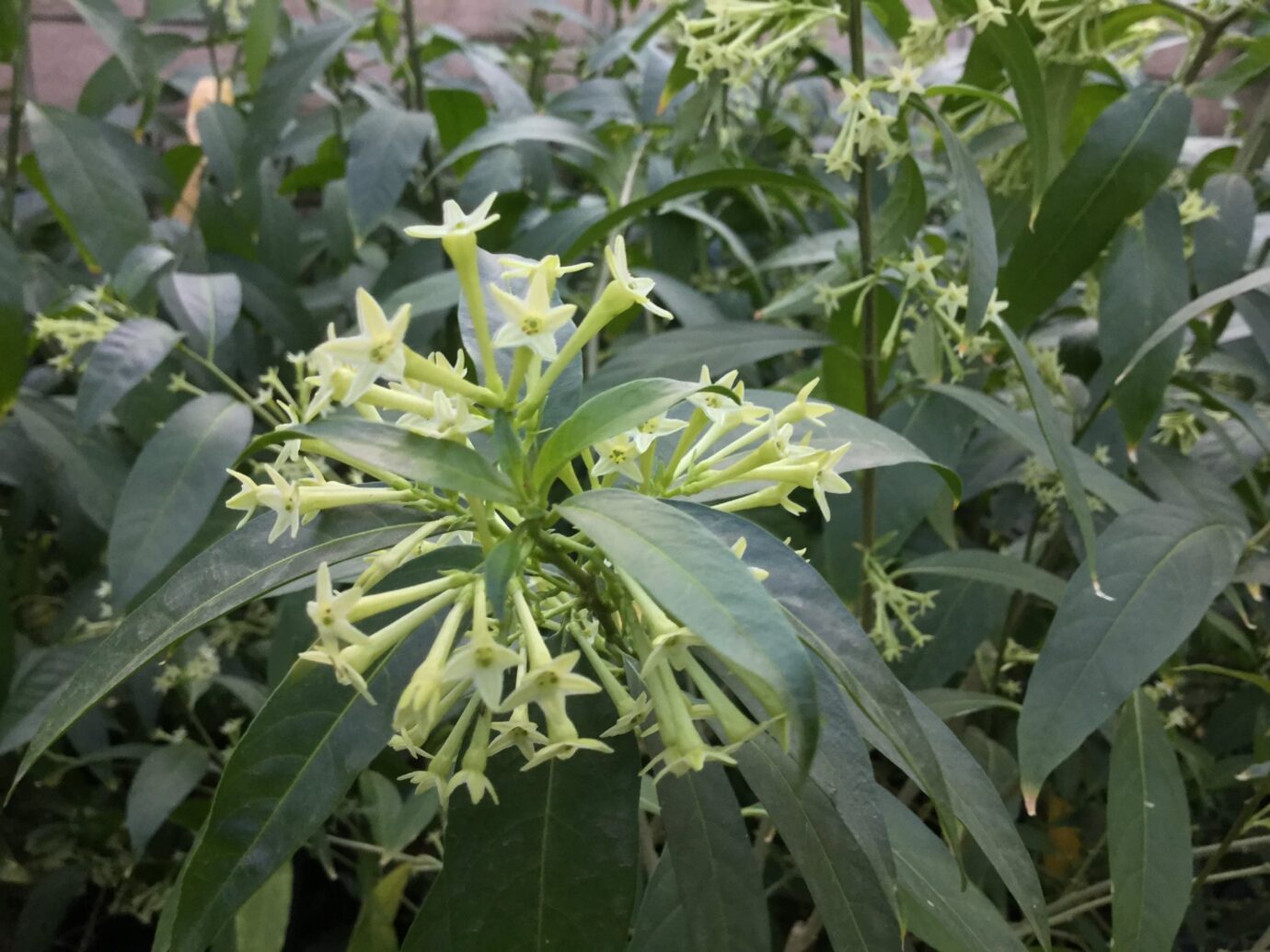
Persian Night Blooming Jasmine at Paradise Nursery in Los Angeles
Prized for its heady fragrance, Cestrum nocturnum (Night-Blooming Jasmine) is a bushy evergreen shrub adorned with gracefully arching branches lined with glossy, pointed, dark green leaves. In summer, a profusion of slender, tubular, creamy-white flowers, 1 in. long (2.5 cm), open in the evening and close the following morning.
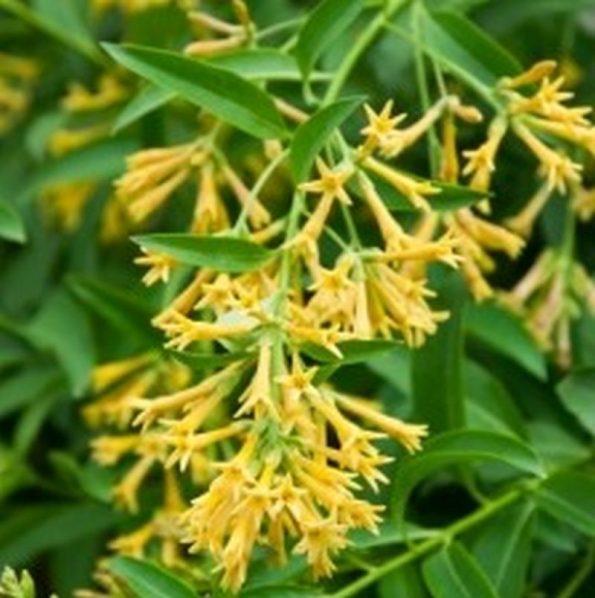
Night Blooming Jasmine Star Nursery Garden and Rock Centers
How To Plant A Night Blooming Jasmine. Published: January 10, 2024. Written by: Katrinka Harder. Learn how to plant a night blooming jasmine in your garden with our expert tips and techniques for ornamental gardening. Create a stunning and fragrant outdoor space.
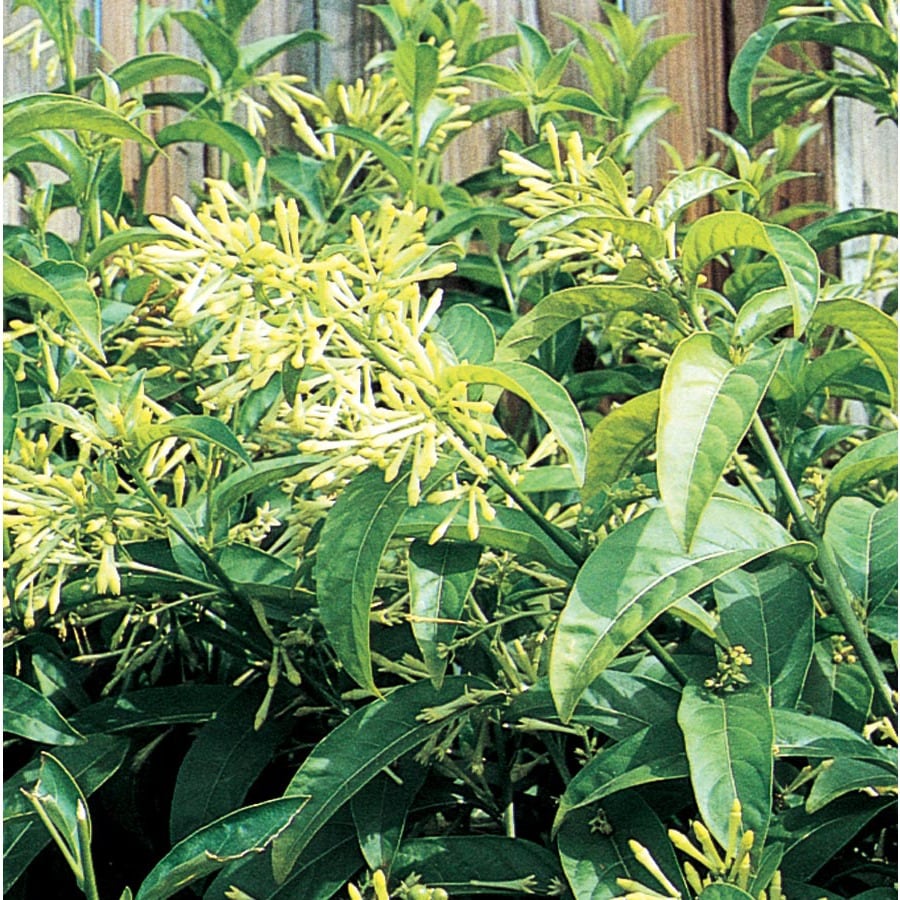
Night Blooming Jasmine (L7495) at
Night blooming jasmine functions as a natural insect repellent, especially against mosquitoes, so consider planting it near your bedroom window. Night Jasmine is mildly toxic to humans and animals, so if you have curious pets or kids, it's best to keep it out of reach. You can use Night Blooming Jasmine as a beautiful backdrop for smaller plants.
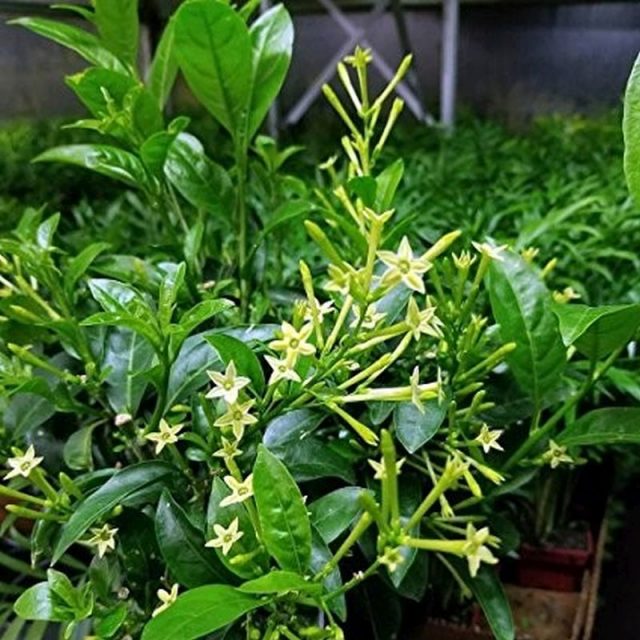
Night Blooming Jasmine Star Nursery Garden and Rock Centers
Night-blooming jasmine ( Cestrum nocturnum) is a flowering plant that belongs to the nightshade ( Solanaceae) family. Night-blooming jasmine is an evergreen shrub that displays glossy green leaves and tiny white flowers. Native to the West Indies in the Caribbean, night-blooming jasmine grows best in USDA hardiness zones nine through eleven.
AP Biology Plant Project NightBlooming Jasmine, Cestrum Nocturnum
Night-blooming jasmine ( Cestrum nocturnum) is a fast-growing woody shrub. Part of the Solanaceae family, which also includes potatoes and tomatoes, the plant isn't a true jasmine. It gets its name from the tubular greenish-white or yellow flowers that emit a highly fragrant scent at night and are attractive to butterflies and other pollinators.
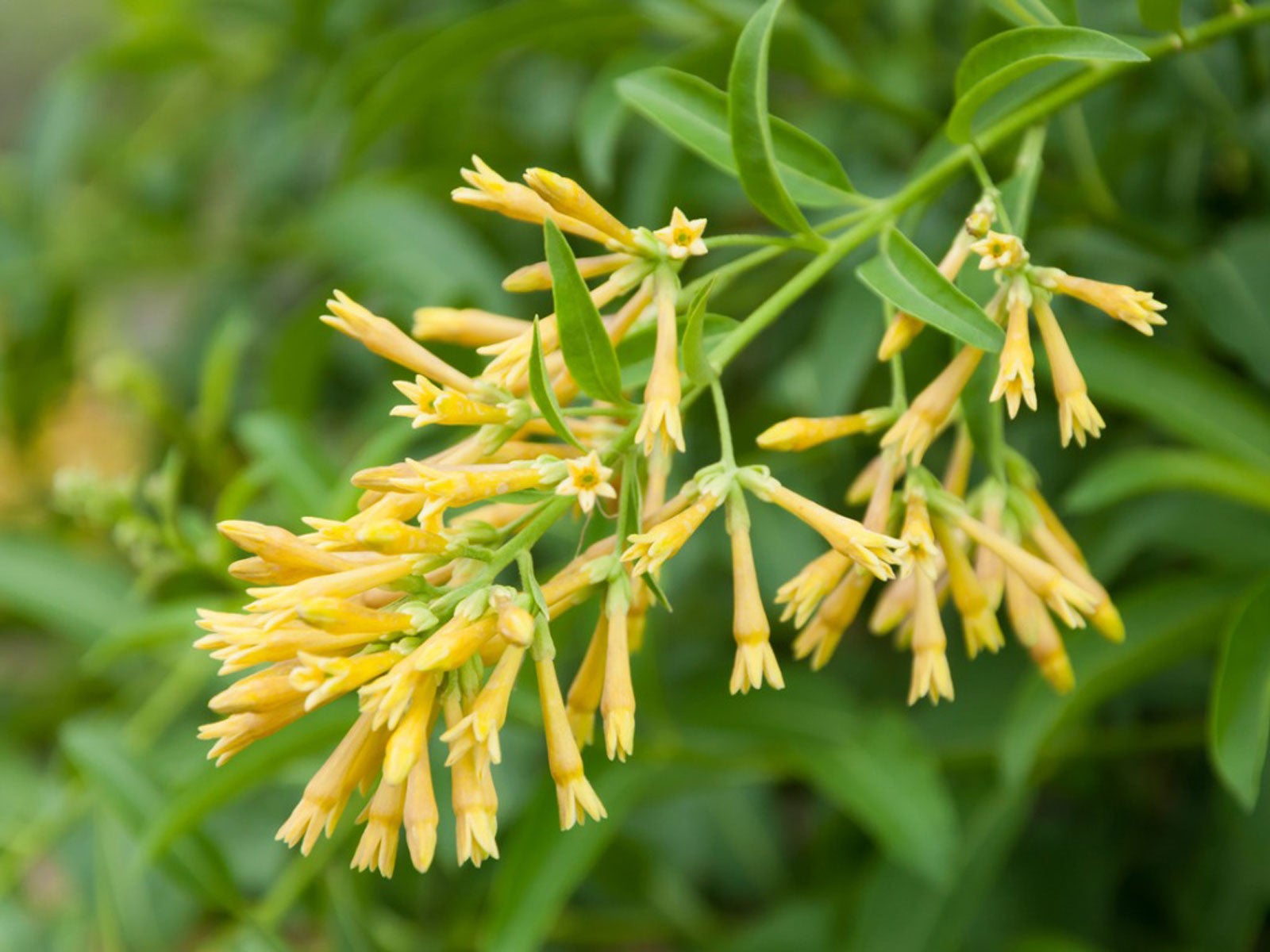
What Is Night Blooming Jasmine Tips For Growing Night Jasmine Plants
Night-blooming jasmine can be grown outdoors in USDA zones 6 to 10. Plant in spring after all danger of frost passes. In colder climates, to protect the vines from damage due to cold winter winds, support your plant with a sturdy structure and wrap it in insulating materials such as burlap or spun polyester from late fall until early spring.

Night Blooming Jasmine Complete Growing and Care Guide
Overview Plant Type: Perennial, woody shrub Family: Solanaceae (nightshade family) Sun Exposure: Full sun to partial shade Watering: Moderate, consistent moisture Colors: Greenish-white or yellow flowers Size: 6 to 12 feet tall, 4 to 6 feet wide Hardiness Zones: 8-11 Soil Type: Well-draining, loamy or sandy Soil pH: